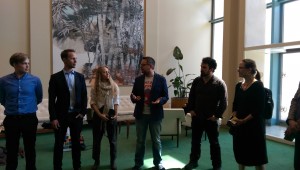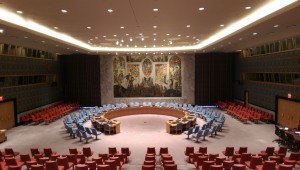A UN museum?
I got to spend yesterday with an awesome group of about twenty people at the United Nations, brainstorming what a UN museum might look like. This was under the auspices of the UN Live project which (I believe) last week was endorsed by UN Secretary General Ban Ki-moon.
Although it was a free-ranging discussion from many points of view, there seemed to be general implicit agreement about a few points. (What the UN Live group does with this discussion is up to them, of course.)
First, there was no apparent interest in constructing a museum that takes telling the UN’s story as its focus. Rather, the discussion was entirely about ways in which the values of the UN could be furthered by enabling people to connect with one another around the world.
Second, No one even considered the possibility that it might be only a physical museum. Physical elements were part of many of the ideas, but primarily to enable online services.
Here are some of the ideas that I particularly liked, starting (how rude!) with mine.
I stole it directly from a Knight Foundation proposal by my friend Nate Hill at Chattanooga Public Library. He proposed setting up 4K displays in a few libraries that have gigabit connections, to enable local residents to interact with one another. At the meeting yesterday I suggested (crediting Nate, but probably too fast for anyone to hear me, so I’m clear, right?) that the Museum be distributed via “magic mirrors” – Net-connected video monitors – that connect citizens globally. These would go into libraries and other safe spaces where there can be facilitators. (We’re all local people, so we need help talking globally.) Where possible, there might be two screens so that people can see themselves and the group they’re talking with. (For some reason, I like the idea of the monitors being circular. More like portals.)
These magic mirrors would be a platform for activities to be invented. For example:
-
Kids could play together. Virtual Jenga? Keep a virtual ball afloat? (Assume Kinect-like sensors.) Collaborative virtual jigsaw puzzle of a photo of one of their home towns? Or maybe each group is working collaboratively on one puzzle, but each team’s pieces are part of the image of the other’s team’s home. A simple mirror imitation game where each kid mimics the other’s movements? It’s a platform, so it’d be open to far better ideas than these.
-
Kids could create together. Collaborative drawing? Collaborative crazy machines a la Rube Goldberg?
-
Real-time, video AMAs: “We’re Iranian parents. AUA [ask us anything] at 10am EDT.”
-
Listings for other activities, including those proposed below.
Someone suggested that the UN create pop-up museums by bringing in a shipping container stocked with media tools. (Technically, a plop-down museum, it seems to me.) The local community would be invited to tell its story, perhaps in 100 images (borrowing the British Museum’s “A History of the World in 100 Objects”), or perhaps by providing a StoryCorps-style recording booth. Or send the kids out with video cameras. (There might have to be someone who could help with the media.) The community would be able to tell its story to the world. The world could react and interact. (These containers could contain magic mirrors.)
Another idea: Facilitate local people coming together virtually to share solutions to common problems, building on the multiple and admirable efforts to do this already.
Another idea: One group pointed out that museums typically face backwards in time. So suppose the UN museum instead constructed itself in real time as significant events occurred. E.g., as an earthquake disaster unrolls, the UN Museum would track it live, presenting its consequences intimately to the world, recording it for posterity, and facilitating relief efforts.
There was general agreement, I believe, that all of the UN Museum’s content should be openly available through APIs.
There were many, many more ideas, many of which I find exciting. I don’t know if any of the ideas discussed are going to make it past the cool-way-to-spend-an-afternoon phase, but I am thrilled by the general prospect of a UN Museum that takes as its mission not just the curation of artifacts that tell a story but advancing the UN’s mission by connecting people globally around common concerns, shared interests, and a desire to help and delight one another.
Now go ahead and be cynical and snarky.











